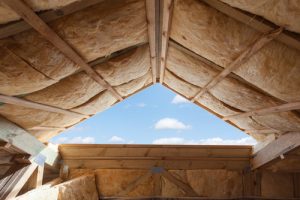There are many cheap and customary insulation materials available on the market today. Many of these have been around for quite some time. Each of these insulations possess their own ups and downs. As a result, when deciding which insulation material you should use, you should be sure to be aware of which material would work the most effective as part of your situation.
Recently, materials like aerogel (used by NASA for the making of heat resistant tiles, able to withstanding heat up to approximately 2000  degrees Fahrenheit with insufficient heat transfer), became affordable and available. One specifically is Pyrogel XT. Pyrogel is probably the most efficient industrial insulations within the world. Its required thicknesses are 50% – 80% less than other insulation materials. Although slightly dearer than a number of the other insulation materials, Pyrogel is getting used increasingly for specific applications.
degrees Fahrenheit with insufficient heat transfer), became affordable and available. One specifically is Pyrogel XT. Pyrogel is probably the most efficient industrial insulations within the world. Its required thicknesses are 50% – 80% less than other insulation materials. Although slightly dearer than a number of the other insulation materials, Pyrogel is getting used increasingly for specific applications.
However, there are lots of useful insulation materials that are cheap enough to be affordable and useful in bulk. Here are 5 commonest forms of insulation materials:
1. Fiberglass
Fiberglass is the most typical insulation used in modern times. Due to the way it is manufactured, by effectively weaving fine strands of glass into an insulation material, fiberglass is ready to attenuate heat transfer. The principle downside of fiberglass is the likelihood of handling it. Since fiberglass is crafted from finely woven silicon, glass powder and tiny shards of glass are formed. These can cause damage to your eye, lungs, and even skin, if the correct safety equipment isn’t worn. Nevertheless, when the correct safety equipment is designed, fiberglass installation can be performed without incident. Fiberglass is a wonderful insulation material, with ratings as high as R-38. If you are seeking a cheap insulation, this is definitely the way to go, though setting it up definitely requires safety precautions. Make sure to use eye protection, masks, and gloves when handling this product.
2. Mineral Wool
Mineral wool actually can be described as several several types of insulation. First, it might discuss with glass wool, which is certainly fiberglass created from recycled glass. Second, it could refer to rock wool, and that is a kind of insulation made out of basalt. Finally, it might check with slag wool, which is produced further from slag from steel mills. The vast majority of mineral wool within the United States is definitely slag wool. Nearly all of mineral wool does not come with additives to allow it to be fire resistant, making it poor to be used in situation where extreme heat is present. When with other, more fire resistant types of insulation, mineral wool will definitely be an effective way of insulating large areas.
3. Cellulose
Cellulose insulation is maybe some of the eco-friendly forms of insulation. Cellulose is manufactured out of recycled cardboard, paper, as well as other similar materials. Some recent studies on cellulose have been included that it may be an excellent product to be used in minimizing fire damage. Due to compactness of the fabric, cellulose contains beside no oxygen within it. Without oxygen within the fabric, this helps to minimize the volume of damage that a hearth can cause. So not exclusively is cellulose perhaps some of the eco-friendly types of insulation, but it is also probably the most fire resistant forms of insulation. However, there are certain downsides to this material also, such as the allergies that many individuals needs to newspaper dust. Also, finding individuals skilled in employing this sort of insulation is relatively hard in comparison with, say, fiberglass. Still, cellulose is an inexpensive and effective technique of insulating.
4. Polypolyurethane Foam
I believe not the most abundant of insulations, polyurethane foams are an excellent form of insulation. Nowadays, polyurethane foams use non-chlorofluorocarbon (CFC) gas to be used to be the blowing agent. This assists to decrease how much damage to the ozone layer. They are relatively light, weighing approximately two pounds per cubic foot (2 lb/ft^3). They’ve an R-value of approximately R-6.5 per inch of thickness. There’s also low density foams that can be sprayed into areas which have no insulation. These kinds of polyurethane insulation usually include approximately R-3.6 rating per inch of thickness. Another advantage of this style of insulation is that it is fire resistant.
5. Straw Bales
And eventually, straw bales. While you probably will not expect straw bales it doesn’t need to be of concern on this planet of recent synthetic insulations, you may be stunned at the ratings that straw bales have received. Recent testing produced by the Oak Ridge National Laboratory showed that straw bales had as high as R-3 per inch of thickness. While straw itself is just not fire resistant, it can still be used in many situations where insulation is required with fire perhaps being of insufficient concern. Also, when along with various other fire resistant insulations, straw bales might get an efficient and cheap approach to insulate an area.
There are numerous types of insulation available, each having their own set of properties. Only by searching for each kind thoroughly are you able to discover which will be the correct in your particular needs. As a fast overview:
Aerogel is dearer, but definitely by far the best of insulation.
Fiberglass is affordable, but requires careful handling.
Mineral wool actually works, though not fire resistant.
Cellulose is fire resistant, eco-friendly, and effective, but more difficult to apply.
Polyurethane is undoubtedly an throughout good insulation product, though not particularly eco-friendly.
Straw bales work well and eco-friendly, though not fire resistant.
Call us today at (800) 818-4167
